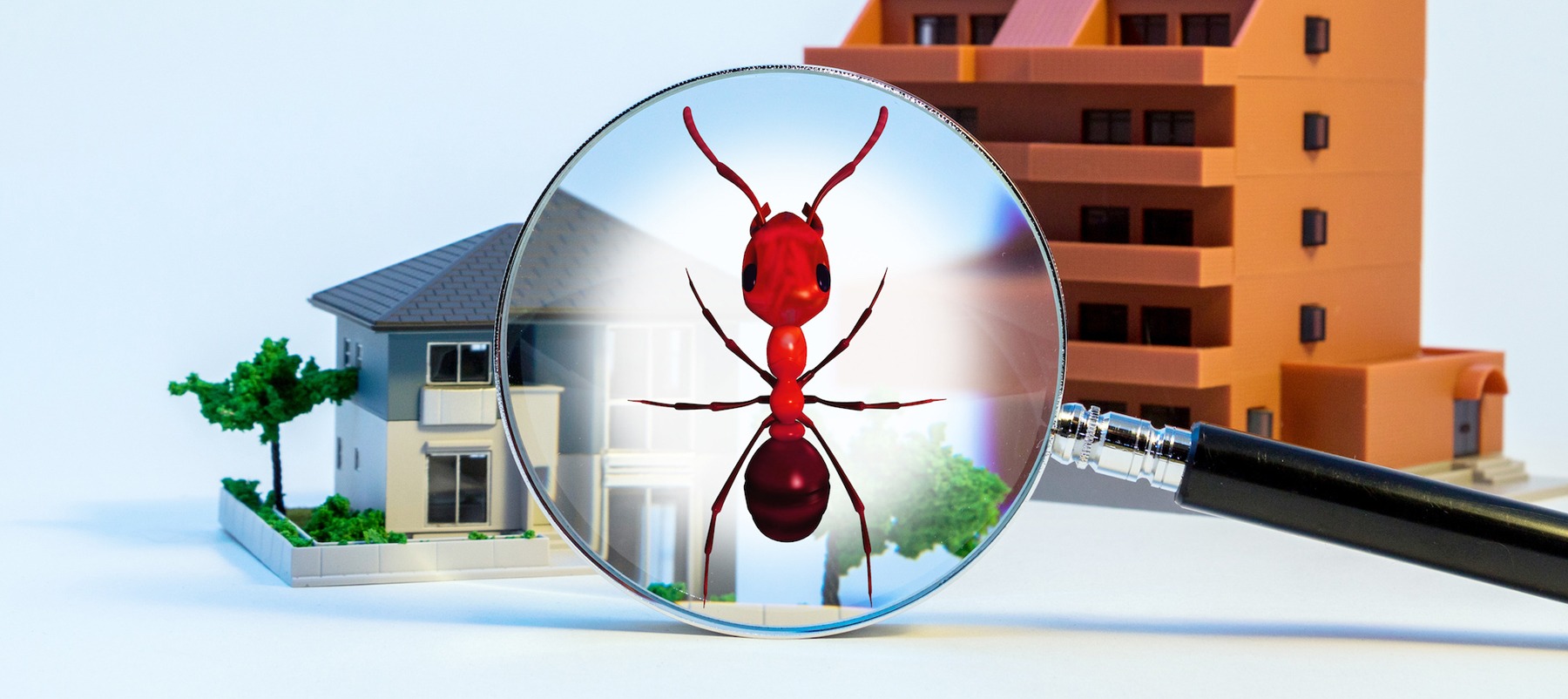Are you aware of what stops termites from attacking your home?
Although Moreton Bay Building and Pest Inspections conducts termite inspections across a large area of South East Queensland we spend most of our time undertaking termite inspections in a belt extending West from Moreton Island, through Bribie Island, Sandstone Point, Ningi, Beachmere, Toorbul, Donnybrook, Elimbah, Caboolture, Morayfield, Wamuran, D’Aguilar, Woodford and Kilcoy.
This East – West belt is still, for the most part, heavily forested and is home to extensive termite colonies with many of our structures built in close proximity, well within attacking range.
Many early settlers in the region constructed houses from extremely durable timber and elevated from the ground. Termites known to attack the durable hardwood used in the construction of the early homes did not conceal themselves well and took a long time to cause significant damage. Their mud leads were easily spotted on the stumps, often before any real damage was done. Termite management of these structures was not complex and easily understood. A regular, routine termite inspection of the sub-floor and surrounding areas on the property was all that was required to manage termite attack.
As time progressed structures became more complex often incorporating elevated areas with areas built from concrete on the ground. Plantation softwood use became more common.
Unfortunately, this combination allowed the more secretive, more destructive genus of termites to attack the structures by concealing themselves in areas of the home impossible to get to due to the complex designs.
Often the complex designs incorporated an area around the perimeter of the structure that provided completely concealed access to termites into the structural framing elements of the home. Termite inspection of this area is not possible.
During this period, termite management in new construction relied heavily on chemical treatment of the area under concrete slabs. These chemicals degenerate over time with many now at end of life. Once the chemical is no longer a deterrent, termites have unimpeded access into your home.
Modern homes are protected against termite attack by many different means. Whilst current termite management and construction practices are a significant improvement over those of the past, modern termite management systems still require a thorough understanding and maintenance in order to ensure they perform as intended.
Regular termite inspections incorporating thorough analysis of the environment surrounding the structure along with investigation of the construction practices utilised is the first step in the development of a termite management strategy that will protect your home from attack
With twenty-nine years’ experience in construction and termite management, Matt Johnston from Moreton Bay Building and Pest Inspections undertakes comprehensive termite inspections in order to establish the amount of activity and damage that exists on a property and in a structure and provides detailed termite inspection reports with the aim of ensuring property owners have all the information they need to be confident in the decisions they make regarding the termite management of their homes.
Not only will a termite inspection and report provided by Moreton Bay Building and Pest Inspections identify any live termites or termite damage in your home it will also provide information regarding conditions that will attract and sustain termites within the structure or on the property.
The termite inspection and report will also examine the construction methods utilised and identify areas that provide concealed entry to termites.
Suggestions on how to manage all of the identified issues will also be provided at no extra cost.
The single most important factor in successful termite management is the understanding of the conditions conducive to termite attack.
Moreton Bay Building and Pest Inspections provide this understanding to every client with every termite inspection and report they provide.


